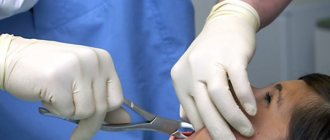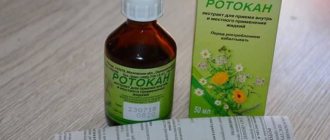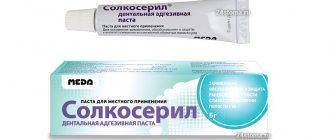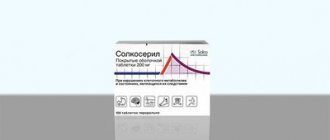Content:
- general information
- Zoloft overdose: how many tablets cause it
- Zoloft overdose: symptoms
- Zoloft overdose: what to do
- Withdrawal syndrome
Few people know that the popular antidepressant Zoloft in Russia has a noticeable narcotic effect. Long-term or uncontrolled use can lead to an overdose of Zoloft and death.
Angina pectoris: what not to do
- endure pain, refuse to take medications;
- postpone visiting a doctor if attacks occur constantly;
- exceed the maximum dose of drugs;
- continue to abuse alcohol, overeat fatty, fried foods.
ATTENTION! If you are concerned about chest pain, consult a cardiologist! You should not take medications without consulting a specialist.
The Medicenter clinic employs cardiologists with extensive experience, and also has modern diagnostic equipment, thanks to which the doctor can determine the most appropriate treatment regimen and prevention of angina pectoris.
general information
The active substance, Sertraline, acts as a serotonin reuptake inhibitor. The dosage is selected by the doctor individually for each patient based on the results of a medical examination. In this case, the specialist is guided by such considerations as the general state of health, the existing clinical picture and the diagnosis.
The medicine is prescribed if:
- prolonged or severe depressive episodes,
- obsessive-compulsive disorders;
panic attacks;- social phobias;
- post-traumatic stress disorders (PTSD).
It is sometimes prescribed to prevent depression. Most often it is used to treat adults, but in the presence of obsessive-compulsive disorder it is also given to children over 7 years of age.
Those taking prescription Zoloft are not at risk of a fatal overdose. If you violate the doctor's recommendations, unpleasant side effects and the development of addiction are possible. Abrupt withdrawal on your own can also cause harm, so if an addiction has formed, the help of a narcologist is required. If the drug is withdrawn on its own, the patient experiences frequent mood swings and becomes nervous and irritable. There are also physiological reactions such as nausea, headache, sleep disturbances and panic.
How to recognize: main symptoms
Intoxication is possible in mild and severe degrees. In the first case, a common cause is the first attempt to smoke. The body reacts to this with the following symptoms:
- dizziness;
- noise in ears;
- gagging;
- increased heart rate;
- increased saliva production;
- spasms in the abdomen or larynx.
Mild intoxication usually goes away on its own. Within a few hours, not a trace remains of the symptoms. In rare cases, a person is still worried about weakness and headache. Signs of nicotine poisoning in severe form are more serious and pronounced. Unpleasant sensations often occur among active smokers who do not monitor the amount they smoke or smoke low-quality products. All signs are similar to a mild course, but they appear more intensely and only increase over time. In severe cases, the patient experiences:
- severe shortness of breath;
- delirious or faint state;
- convulsions.
A strong blow is dealt to the brain, which causes hallucinations, anxiety, lethargy, and thinning of blood vessels. Excessive amounts of toxins entering the body through smoking can cause an allergic reaction, impair vision, cause kidney failure or inflammation of the pancreas. Failure to provide assistance in a timely manner leads to coma or paralysis of the respiratory center.
Zoloft overdose: how many tablets cause it
Chasing strong, vivid sensations, people often exceed a reasonable dose. Over time, they develop addiction and increase the risk of Zoloft overdose .
That is why this drug is considered a “pharmacy drug”. It is available in tablets of 25, 50 and 100 mg. The maximum allowable intake is 200 mg. The toxic concentration of the substance in the blood is 1–2 mg/l. In case of an overdose of Zoloft, the lethal dose is 5–10 g or 3–12 mg/l of blood (it all depends on the individual characteristics of the person - weight, age, chronic diseases, etc.). But it must be borne in mind that any drug, if used systematically in excessive quantities, will contribute to intoxication.
Many people are concerned about whether it is possible to die from an overdose of Zoloft? It is possible if you take a very large dose, but this rarely happens. Combination with a number of other medications, chemicals and narcotic substances, as well as alcoholic beverages poses a great danger.
Serious consequences can be caused by concomitant use with:
- monoamine oxidase inhibitors;
- pimozide;
- medications that depress the central nervous system and alter serotonergic transmission;
- lithium;
- triptans;
- phenytoin;
- anticoagulants;
- atenolol;
- cimetidine;
- glibenclamide and digoxin;
- agents affecting platelets,
- drugs that are destroyed by cytochrome isoenzymes.
Instructions for use KETOROL
Ketorol is intended for intramuscular injection; the drug should not be used for epidural or spinal administration. The solution is injected slowly IM (deep into the muscle). The onset of the analgesic effect is about 30 minutes with its maximum severity within 1-2 hours, the average duration of analgesia is 4-6 hours.
Administration of the drug several times a day for more than 2 days is not recommended, since in most cases patients do not require longer-term analgesic therapy, or can be switched to oral ketorolac. In this case, the duration of use of ketorolac parenterally and orally should not exceed 5 days in total.
To achieve maximum analgesic effect in the early postoperative period, it is possible to use ketorolac and narcotic analgesics together; the daily dose of the latter in this case is reduced. Ketorolac does not affect the addiction of copioids and does not increase the associated respiratory depression or sedation.
Dose selection and adjustment should be made in accordance with the intensity of pain and response to the drug. To minimize side effects, it is recommended to use the minimum effective dose for the shortest possible course of treatment.
Adults:
The usually recommended initial dose of Ketorol is 10-30 mg, followed by 10-30 mg every 4-6 hours. In the early postoperative period, it is permissible to administer the drug every 2 hours, if necessary. The maximum daily dose is 90 mg/day, in patients with body weight less than 50 kg - no more than 60 mg/day.
Elderly patients (over 65):
It is recommended to use the drug in a dose of 10-15 mg every 4-6 hours, the total dose should not exceed 60 mg/day. Due to the higher risk of side effects in this group of patients, the minimum possible duration of treatment and regular monitoring of the patient’s condition to exclude gastrointestinal bleeding are recommended.
Children:
The safety and effectiveness of ketorolac in children have not been confirmed; the drug is not recommended for use in children under 16 years of age.
Patients with impaired renal function:
the use of ketorolac is contraindicated in patients with severe and moderate renal impairment. In case of mild renal dysfunction, it is permissible to use Ketorol in a dose of no more than 60 mg/day.
If it is necessary to combine parenteral and oral administration of Ketorol, the total daily dose should not exceed 90 mg (60 mg in persons over 65 years of age, with a body weight of less than 50 kg or impaired renal function), while the dose of the drug taken orally should not exceed 40 mg/day . It is recommended to quickly transfer the patient only to the oral form of the drug.
Zoloft overdose: symptoms
In first place comes:
- Drowsiness.
- Trembling of hands and feet.
Spasms, convulsive states.- Nausea and vomiting.
- Disorder of the gastrointestinal tract.
- Rapid pulse.
- Emotional excitability.
These symptoms are evidence of Sertraline accumulation in the brain. In addition to this, you can observe:
- increased blood pressure,
- changes in heart tissue;
- fainting, short-term loss of consciousness;
- inflammation of pancreatic tissue.
The effect on nervous tissue and different parts of the brain is accompanied by:
- delusional disorders;
- manias;
- stupor;
- auditory and visual hallucinations.
It will take about 24 hours to remove Sertraline from the body, during which there are complaints of pain in the temples, back of the head, sternum and left side. Convulsions and fainting are possible.
Analgesic poisoning
Opioid analgesics
Narcotics with analgesic properties act centrally by activating endogenous opioid receptors.
These same neuronal structures are localized in areas of the brain and spinal cord responsible for other functions. Therefore, the overall range of effects is quite wide - against the background of expected analgesia, breathing, mental processes and smooth muscle tone are disrupted. Painkillers differ in strength, so the minimum significant dose for each of them will be different. An overdose of analgesics manifests itself as follows (using the example of morphine):
- dizziness
- nausea
- labored breathing
- general weakness
- vomit
- uncontrollable sleepiness
- disturbance of consciousness – stupor, stupor, fainting, coma
- sticky cold sweat
- pale skin with a bluish tint
- drop in body temperature
- acute retention of urination and defecation
- weakening and decreased heart rate
- breathing is shallow, frequent
- drop in blood pressure
- increased vascular permeability (edema)
- a sharp constriction of the pupil is miosis, but with increasing hypoxia (oxygen “starvation”) it expands – mydriasis
- muscle hypertonicity
- increased spinal reflexes, such as knee reflexes
- tremor
- convulsions
- intestinal atony - constipation, obstruction
- acute dilatation of the stomach
- encephalopathy
At the initial stages, you can suspect an overdose by noticing strange drowsiness, lethargy and shortness of breath. Moreover, the patient’s condition progressively worsens. Poisoning leads to life-threatening complications - pulmonary and cerebral edema, hypoxic myocardial damage (risk of cardiac arrest), acute renal failure (AKI). Without qualified assistance, death occurs as a result of depression of the respiratory center up to its paralysis in 75% of cases. The minimum lethal dose of morphine is 200 mg, fentanyl is 2 mg, and heroin is 60 mg.
After emerging from a coma, the development of irreversible consequences associated with prolonged hypoxia of the brain and internal organs is possible. Focal neurological changes in the form of paralysis and mental disorders occur.
Mixing opiates with alcohol, tranquilizers, barbiturates and other drugs increases the likelihood of poisoning, exacerbating the severity of the condition.
Non-narcotic analgesics
The group of non-opioid drugs is represented by dozens of substances of various chemical origins. Ideally, it is necessary to consider the characteristics of poisoning of each of them. However, the most common overdose is NSAIDs.
Paracetamol
The permissible daily dose of an antipyretic drug should not exceed 4 g. Death is most likely when 15-20 g of the substance is consumed. Overdose is characterized by the following symptoms:
- Liver damage - high hepatotoxicity! The main symptoms are heaviness in the right hypochondrium, jaundice, blood clotting disorders.
- Dysfunction of the gastrointestinal tract (GIT) – nausea, vomiting, epigastric pain, problems with stool.
- Neurosensory damage. Manifested by somnolence, weakness, and rapid progression of hepatic encephalopathy.
- Acute renal failure in the form of tubulointerstitial nephritis.
- Rarely - cardiomyopathy and nonspecific changes on the ECG due to the involvement of the cardiovascular system in general intoxication.
- Shock is a persistent drop in blood pressure against the background of a general clinical condition.
- Rhabdomyolysis is acute necrosis of striated muscles.
- Brain swelling.
Poisoning can be acute with the development of a typical clinic within 6-14 hours. With long-term use of increased doses, a cumulative overdose of the drug due to accumulation in tissues cannot be ruled out.
Paracetamol is often used for suicidal purposes. It is also part of the combined “pharmacy drugs” (“Spazmolex”, “Paratram”, “Zaldiar”), common in the recreational environment.
In world practice, paracetamol is the main cause of poisoning with hepatotropic poisons.
In a multicenter study conducted in the United States, over ten years since the late seventies, 11,195 cases of poisoning were registered, and in 1987, 60,000 cases of poisoning. A significant increase in the number of these poisonings has been noted over the past 10-20 years in France, Denmark, Norway and other European countries. A significant number of paracetamol poisonings is due to the widespread use and high availability of the drug.” CyberLeninka
Zoloft overdose: what to do
First, immediately call an ambulance or a narcologist to your home. If the drug has been taken recently, to stop its absorption, rinse the stomach and give sorbents to drink. It is better to relieve signs of poisoning with medications aimed at cleansing the blood, accelerating metabolic processes, replenishing missing vitamins and microelements, and relieving the main symptoms of intoxication. There is no specific antidote.
For early detection of possible side effects, periodic monitoring of blood pressure, respiratory rate and heart rate should be carried out.
Symptoms of angina
The main symptom of the onset of an attack is pain in the heart area. It is characterized by:
- pressing, squeezing character;
- course in attacks, with intensification and weakening;
- localization in the upper or middle part of the chest with a return to the left arm;
- gradual increase;
- abrupt cessation after eliminating the cause or taking nitroglycerin.
- feeling of fear and anxiety (popularly “angina pectoris”)
Sometimes patients confuse the symptoms of angina with osteochondrosis of the cervicothoracic region, arthrosis of the shoulder joint, and lung disease. In people with a high threshold for pain sensitivity, angina generally manifests itself as mild discomfort in the chest. Instead of pain, the patient may complain of shortness of breath, or suffocation, heartburn, or attacks of weakness in the left arm.
Withdrawal syndrome
Intoxication is not the only danger; people often experience withdrawal symptoms when suddenly stopping this psychotropic drug. Often patients stop taking pills after the first improvement in their health, which leads to devastating consequences.
Some people use Zoloft as a substitute for drugs, and as a result, if they quit, they may experience full-fledged drug withdrawal. Remember that long-term addiction to Sertraline does not leave its mark on your health.
Withdrawal syndrome has the following manifestations:
- headache;
- trembling of limbs;
- nausea;
- abnormal anxiety;
- constipation;
- excessive irritability.
Such symptoms can be observed over a long period - from two weeks to one month.
In popular culture, an overly frivolous attitude towards antidepressants is widespread, while they can easily cause addiction when taken regularly and for a long time. To overcome addiction, you need to seek professional drug treatment help . The treatment regimen is adjusted by the doctor weekly. As a rule, it includes cleansing the body of drug residues, relieving withdrawal symptoms, improving the functioning of affected organs and systems, and psychotherapy. The attending physician's priority is always to reduce the medication course to a therapeutic minimum.
Angina pectoris: what to do
When you feel pain, take steps to stop the attack:
- Take a comfortable position, preferably sitting.
- Take nitroglycerin. Place 1 tablet under your tongue or place 1-2 drops of a 1% solution on a sugar cube and place under your tongue. If you have a severe headache after taking the drug, the dose can be halved. Don't wait until the pain gets worse, take the medicine right away. If attacks occur frequently, carry nitroglycerin with you.
- If the pain has not subsided after 5 minutes, take another tablet. Note! The medicine can be taken no more than three times in a row.
- If the pain does not go away, weakness, cold sweat appears, it becomes difficult to breathe, call an ambulance. Tolerating these symptoms is dangerous, as a heart attack may occur.
- Even if the pain has passed, it is imperative to consult a doctor and do an ECG and other examinations. In some cases, a period of “imaginary well-being” occurs when the pain is relieved with medications and the patient thinks that this is already enough.
First aid and specialist assistance
When diagnosing poisoning, it is recommended to call an ambulance. Until the doctors arrive, the victim is given first aid, which includes a number of specific measures aimed at normalizing the patient’s condition.
What to do:
- Perform gastric lavage with plenty of clean water. You can add a little soda to it. The patient who drank the solution is induced to vomit. The procedure is repeated until the stomach is completely cleansed.
- In case of poisoning, various sorbents are used to reduce the absorption of Ketorol into the body.
- The victim is allowed to drink large amounts of liquid, which facilitates the rapid elimination of Ketorol.
- Before the arrival of specialists in case of poisoning, it is recommended to monitor the condition of the poisoned person and provide him with rest.
We recommend: Overdose of Lyzobact - what are the dangers for children and adults?
Further treatment of poisoning is carried out by medical workers in a hospital setting.
Help from specialists
The hospital is providing additional therapy and monitoring the victim’s condition.
Measures:
- If necessary, in case of poisoning, the stomach is cleaned again using a probe,
- A solution of sodium chloride 0.9% is administered,
- A saline laxative is used to speed up the elimination process of Ketorol,
- Various medications are prescribed to restore the body's functioning - antiarrhythmics, anticonvulsants, antiulcers.
- In case of poisoning, the necessary blood, urine, ultrasound examinations are carried out,
- The state of the cardiac system is monitored,
- If necessary, consultations are carried out with various medical professionals.









